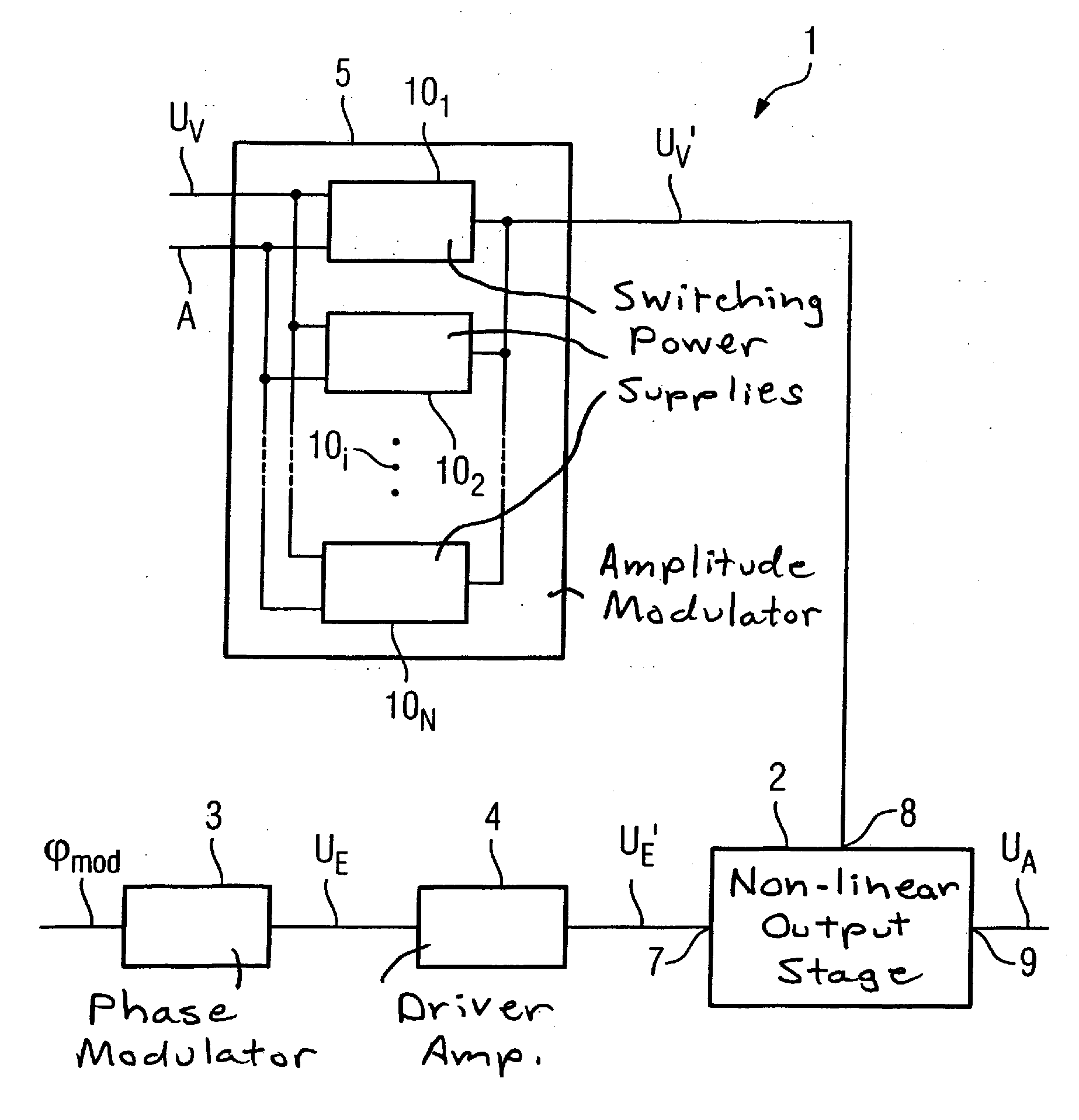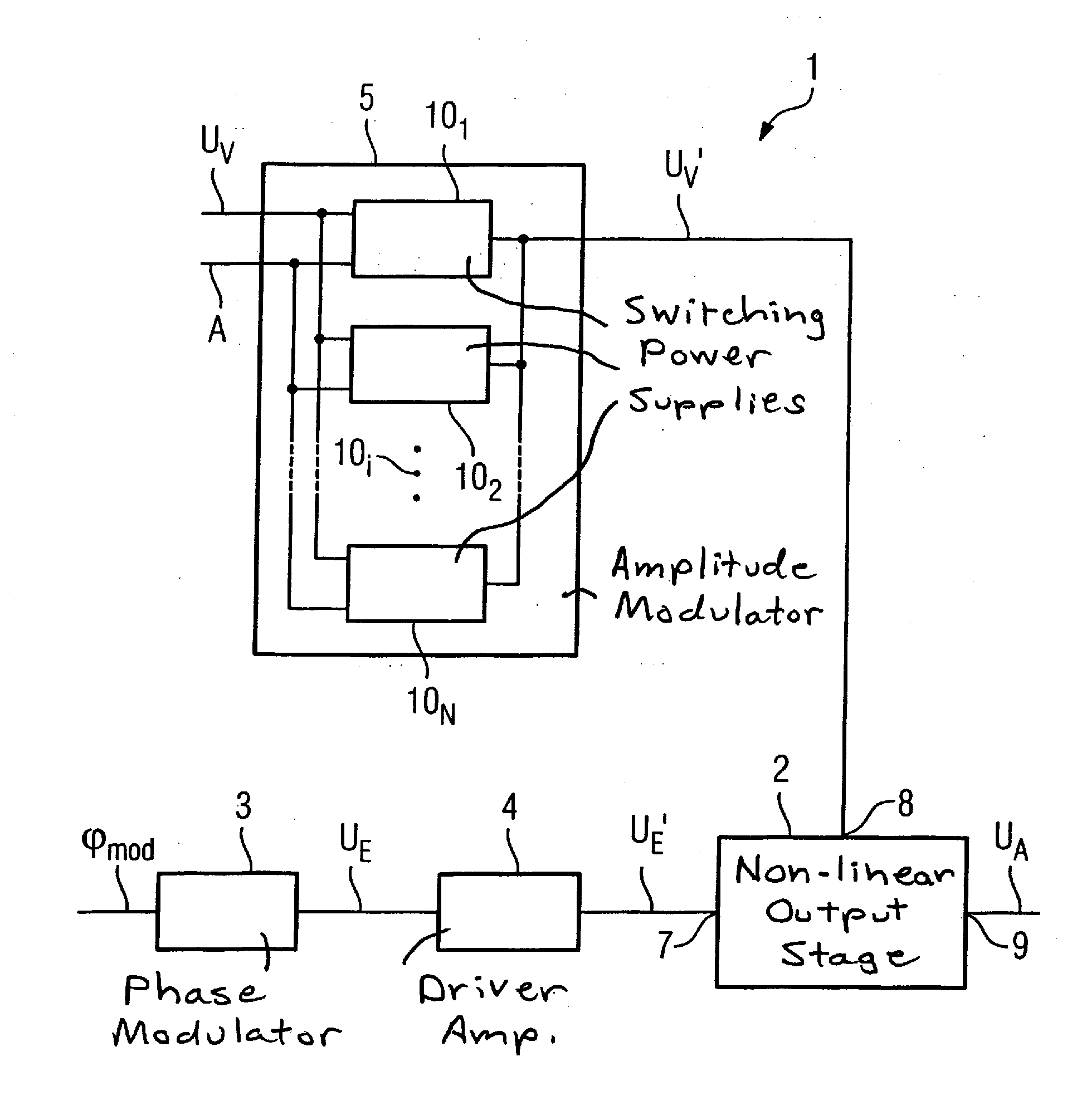Device to generate a modulated electrical radio-frequency signal for a magnetic resonance application
a modulated electrical radio frequency and magnetic resonance technology, applied in the direction of magnetic measurement, instruments, semiconductor devices/discharge tubes, etc., can solve the problems of large, high cost, and loss of modulation of radio-frequency base signal, and achieve simple and cost-effective design
- Summary
- Abstract
- Description
- Claims
- Application Information
AI Technical Summary
Benefits of technology
Problems solved by technology
Method used
Image
Examples
Embodiment Construction
[0017]The shown MR transmitter 1 has a non-linear transmission output stage 2, a phase modulator 3, a driver amplifier 4 and an amplitude modulator 5.
[0018]The transmission output stage 2 is an electronic amplifier of Classes B, C, D, E or F. The transmission output stage 2 has a signal input 7 for an input signal to be amplified, to which input 7 the phase modulator 3 is indirectly connected via the driver amplifier 4. The transmission output stage 2 furthermore has a voltage supply input 8 to which the amplitude modulator 5 is connected. The transmission output stage 2 finally also has a signal output 9 to output the radio-frequency signal US.
[0019]In operation of the MR transmitter 1, the phase modulator 3 generates a radio-frequency (RF) base signal UE which is an alternating electrical voltage in the sub-watt range with a carrier frequency of, for example, 120 MHz. The RF base signal UE is phase-modulated by the phase modulator 3 according to the requirement of a supplied desir...
PUM
 Login to View More
Login to View More Abstract
Description
Claims
Application Information
 Login to View More
Login to View More - R&D
- Intellectual Property
- Life Sciences
- Materials
- Tech Scout
- Unparalleled Data Quality
- Higher Quality Content
- 60% Fewer Hallucinations
Browse by: Latest US Patents, China's latest patents, Technical Efficacy Thesaurus, Application Domain, Technology Topic, Popular Technical Reports.
© 2025 PatSnap. All rights reserved.Legal|Privacy policy|Modern Slavery Act Transparency Statement|Sitemap|About US| Contact US: help@patsnap.com


